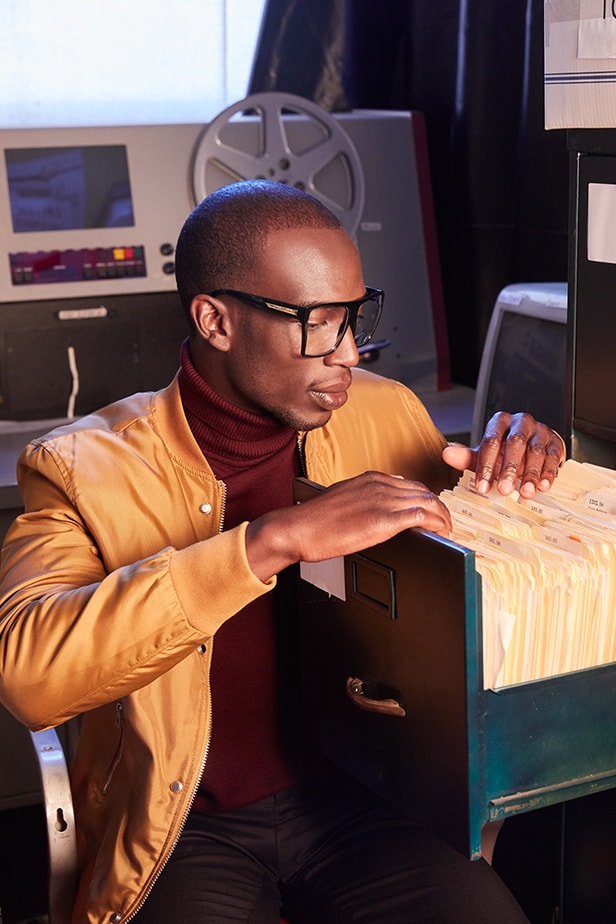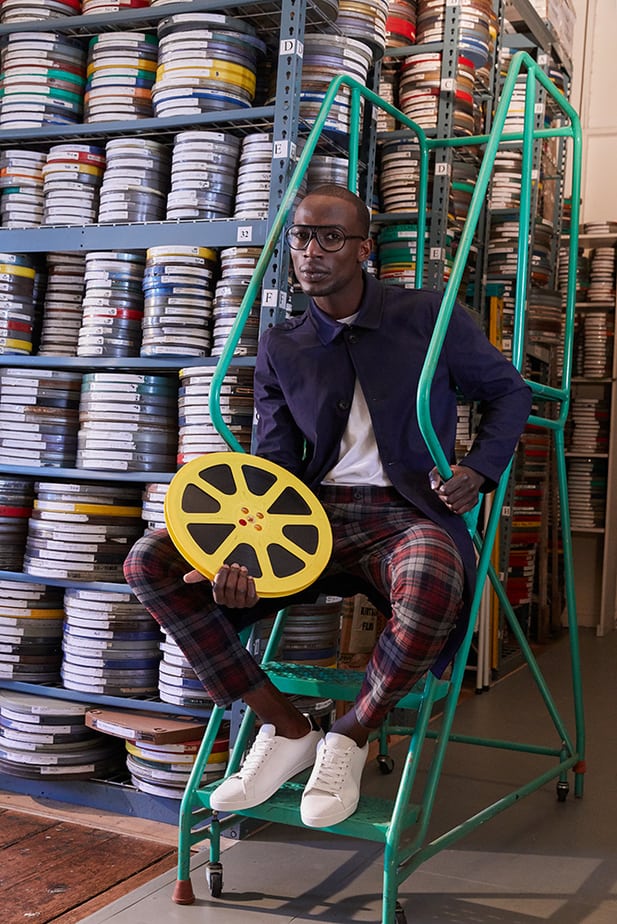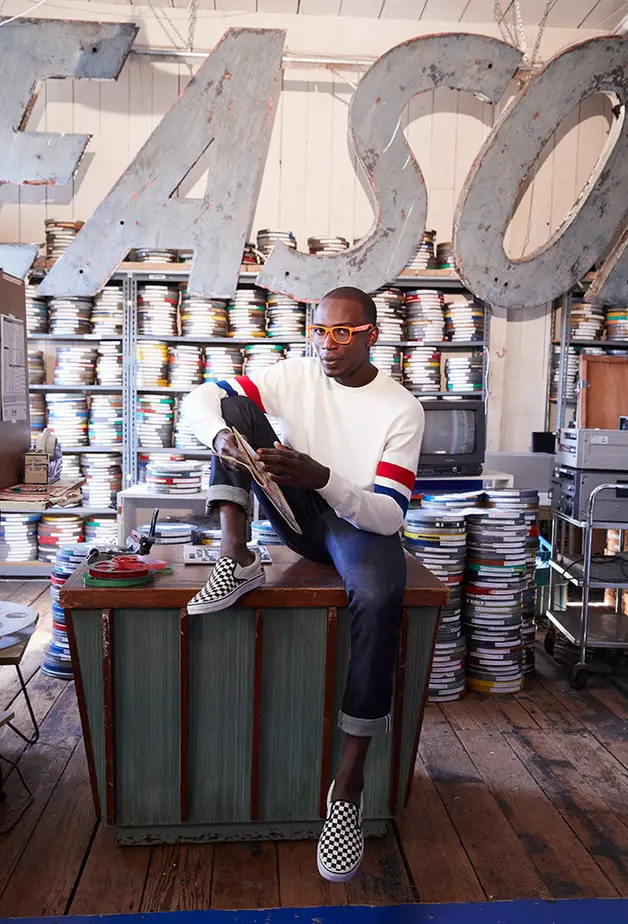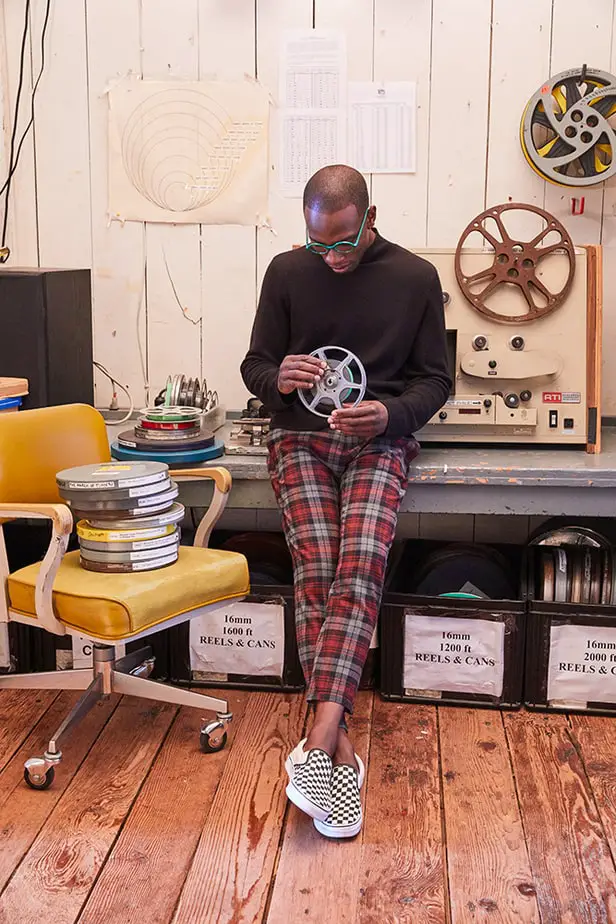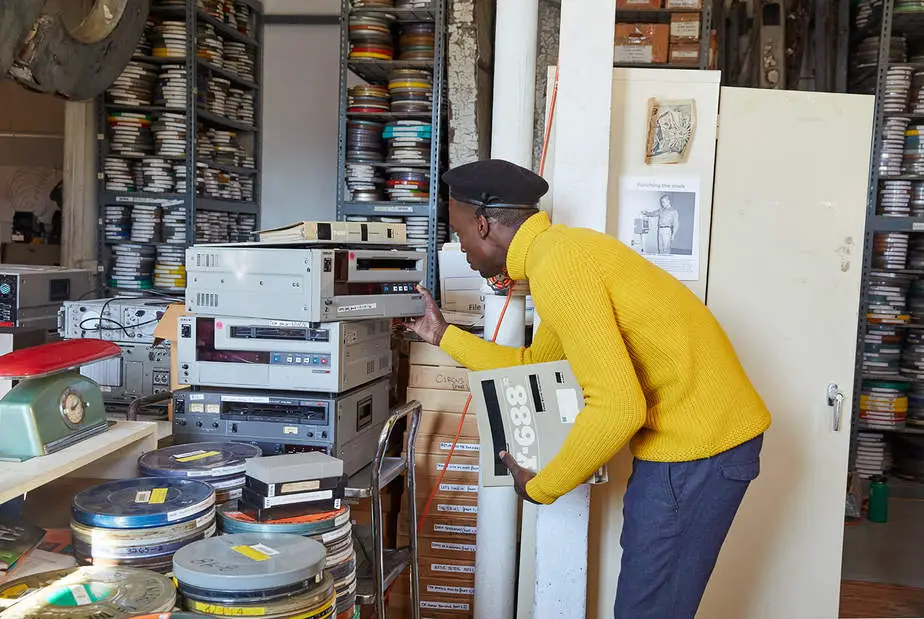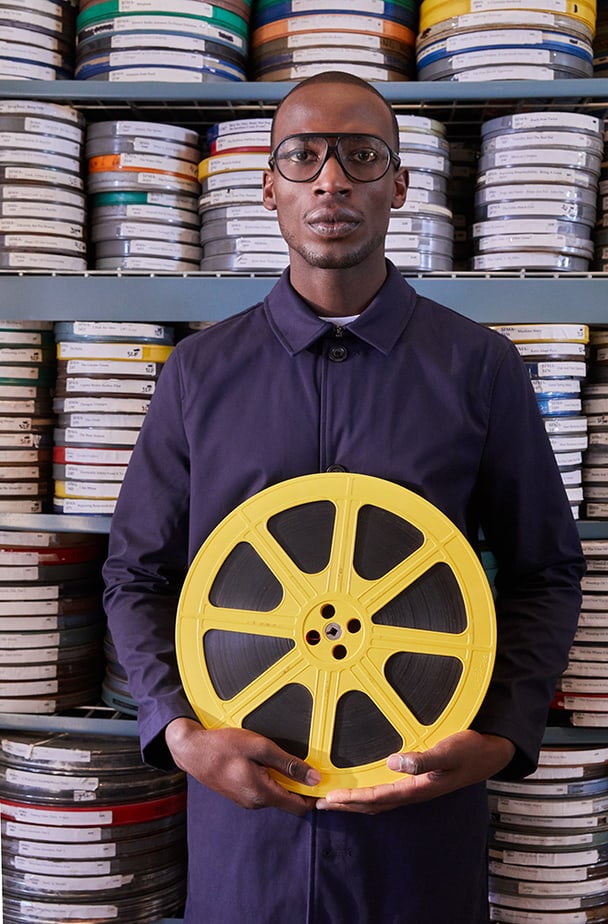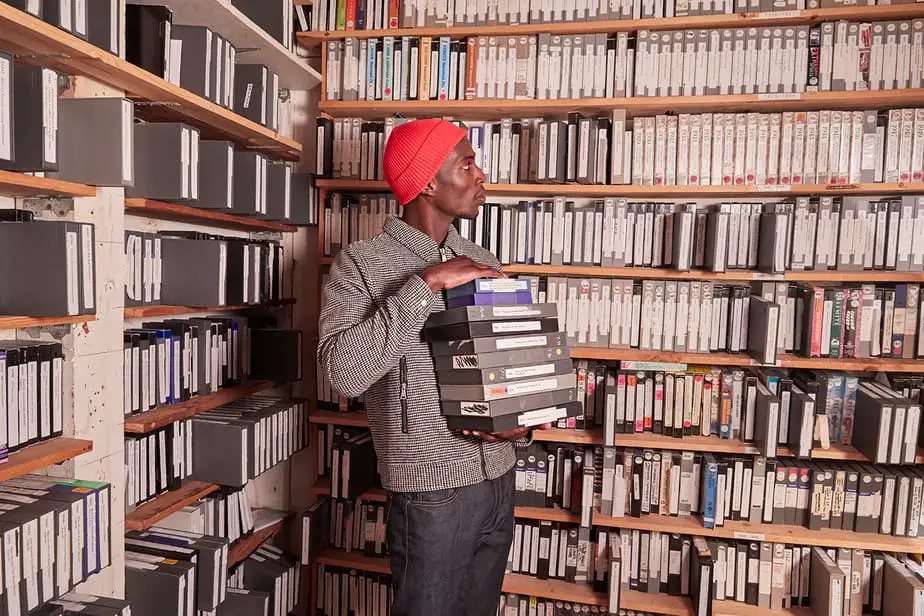BC: I’d like to hear about the history of Oddball and Stephen. How did this project come about and what was Stephen’s background and inspiration for starting the org?
OB: Stephen Parr had been a collector of rare and unusual historical films since the early 1980s. He was a fixture of the art, literary, and music scene in San Francisco and often screened ambient visuals and curated films for live events around the city. His film montages combined pop, history, technology, and unexpected cultural elements in a unique visual mix that made for an intriguing atmosphere for nightclub and gallery crowds.
In 1984, Parr’s reputation for innovative work using film footage caught the attention of Blade Runner director Ridley Scott. Scott licensed Parr’s footage for a project he was shooting in San Francisco. Having secured his first client and a well-known one at that, more clients followed and the business grew over time. As Stephen’s initial part-time endeavors began to coalesce into a full-time occupation that required a commercial space, he moved to his current location at 275 Capp Street, and began to build his film archive, officially registering as a business in 1994.
BC: What is story behind the name?
OB: Oddball Films is unique at its core. Its name comes from its founder, Stephen Parr’s, sensibility of embracing the weird, the odd, empehrema and films that are discarded and abandoned.
BC: Why San Francisco? Tell me about founding this org here.
OB: San Francisco has always embraced the weird, the outsiders while ‘Oddball’ founder himself, Stephen Parr, was similarly drawn to the city for these reasons. The city’s long history of championing the arts and culture in general has a synergic effect on Oddball. It stands as a bastion and meeting space of not only San Francisco history but also a place of creative expression.
BC: What is the brief history of Oddball, from its inception and the first few years, what was the goal? What were the projects? How did the collection grow and develop to become film and video archive?
OB: During the 1990s, 16mm film was becoming more and more obsolete. School districts with massive libraries of educational films switched to video. They were eager to throw out large collections of 16mm for additional storage space. We gladly accepted these historically important collections that were otherwise destined for a landfill. Private collectors and movie theatres donated their holdings to us. What appeared as junk to some turned out to be valuable cultural artifacts to film producers, educators, and scholars. Stephen’s early projects involved pure film montages made for club events such as at the DNA Longue and as own Club Generic. These montages drew from his film collection and centered around themes and were a mix of educational film cut ups and archival anomalies.
BC: It has a small movie theater. Tell me about the private and public showings that happened here. How was it a part of the community – what were the social activities that took place here or that oddball was a part of?
OB: Recently Oddball has decided to focus on more intimate soirees and interviews, and other events. We’re no longer holding a weekly screening series but in the past 10 years we shared our rare films with the public in regularly scheduled unique screenings, interactive events, seminars and presentations by authors and filmmakers every year. Our screening series is locally popular and has become a fixture for cinephiles in the Mission. Very few archives and no stock footage companies that we know of take the time and effort to curate and present their films. Our weekly screenings and moderated presentations have not only entertained and educated many archive visitors over decades, but have also inspired them to archive, curate, and collect films themselves; a few have even become filmmakers!
BC: I’m interested in the breadth of the collection – you guys have instructional videos, pornography, commercials … (I’d love ore examples of things that aren’t typically found in most collections).
OB: Our archive specializes in preserving, providing and licensing offbeat and unusual films that complete the histories of our cinematic culture. We embrace film in all genres, from educational, industrial, medical, military to newsreels, news outtakes, and amateur films. From 1906 films of the San Francisco earthquake to 1950s home movies to 1960s footage of civil rights protests to 1980s music videos right up to the current day, our holdings define our history. If you want footage of a horse swimming the Golden Gate, witness our original 1936 print of Blackie, the Wonder Horse. A filmmaker looking for a shot of San Francisco movie theaters in the 60s would undoubtedly want to see our 1961 amateur film shot by a local from the seat of his car cruising Mission Street, San Francisco in Cinemascope.
BC: Tell me about what guided Stephen’s collecting and what continues to guide that (if you guys are still collecting).
OB: Eclectic, offbeat films, footage that no one else would find any interest in. Films that fill in the cracks of cultureamateur and home movies, b-roll, news and film outtakes, cast offs, strange science and cultish curios. Anything interesting to ethnographic, bizarre medical films, propaganda, historical and experimental works. We also have a comprehensive collection of every film genre from commercials to educational films to military to archival erotica.
BC: Preservationists and Archivists that are currently working at Oddball: Tell me what inspires you about working at Oddball? What are your favorite collections there? What draws you to this place?
OB: We’re most inspired by the size and scope of the archive. Stephen truly created a unique space where film is first and foremost preserved and cataloged. The archive has some more eclectic and personal touches that make it hard not to be drawn to its offbeat glow. It is a truly, unique San Francisco institution that embodies that spirit of the City, both past and present.
BC: Tell me about film (versus digital)! What was Stephen and the orgz position around film?
OB: Film forever! We know how best to preserve film and what it’s lifespan will be. With digital there are a lot of unknowns in regards to codecs and file format support. Though in the end, implementing and understanding the best approaches to making sure both formats are accessible and available is paramount.
BC: Why is it important to archive film? What does it mean to the org?
OB: We are a film archive. While you can find plenty of video online, the physical medium of film is unique. The difference between a film and a digital copy is the difference between a painting and a photocopy; digital data duplicates itself, while film literally expresses its subject through light. For economic and other pragmatic reasons, only a fraction of films in the world have been digitized; we hold many films not available online. Although we routinely digitize films from our archive, we also preserve and understand the value of the original prints. When you watch a rare 16mm film projected in our screening room, you are beholding a form of mid-century magic that has been lost in the digital age. A great archival film can take you into another time and place. History becomes an experience.
BC: Tell me about the logistics of preservation at Oddball.
OB: Funding is most important. It takes time and money to properly store and care for films. At Oddball we do our best given the resources to ensure film is cared for in the most ideal condition. Because digital formats are constantly changing, we need to keep our original source material, i.e. film, available for future transfers. Our archive observes precise temperature controls in our space to keep films from decaying. A properly maintained film is durable enough that it can play as well today as it did 100 years ago. Our company is dedicated to preserving the legacy of celluloid film in its original presentation format.
BC: How do you see the project of Oddball, the contents of the archive and the nature of San Francisco aligning?
OB: Our archive possesses the artful and eccentric charm that has long attracted people to the Mission District. Within the local film community, we have provided archival footage to Bay Area filmmakers and housed and showcased their work in our screenings, soirees and discussions. Oddball also regularly collaborates with local non-profits and charities such as SF Cinematheque, Canyon Cinema, SF Bike Coalition, Ladyfest, and Mother’s Kitchen on screening community events and benefits.
Oddball Films is part of the social and cultural fabric of the Mission district and greater San Francisco. We are committed to maintaining our business as a resource that both draws from the considerable strengths and talents of our community and gives back in both immediate and far-reaching ways. As a stock footage licensing company, we represent the work of San Francisco filmmakers, licensing their footage worldwide. We provide important local services to the Bay Area film community, providing research about and masters of footage for their films. Our staff is particularly adept at researching requests that involve Bay Area history. The Oddball Films research staff has been referred to as a “cinematic think tank”, as they creatively respond not just to footage orders, but to the deeper needs of a local film professional’s project. Our representatives’ collections encompass a deep and broad filmic history of the Bay Area and beyond.
BC: Do you see connections between your/Stephen’s project and the culture of the city?
OB: First and foremost, Oddball Films is a part of San Francisco history. Its archive actively preserves the history of San Francisco on film. We are constantly in search of new acquisitions that chronicle the city, be it a 1941 amateur film of the Chinese community, SF Rice Bowl Parade or the avant-garde film by noted auteur Carroll Ballard, Crystallization.
While it might be an exaggeration to say these films would end up in the trash if we closed, our collection would be scattered to the four winds, and most likely relocated in decentralized archives far away from San Francisco. The city would be losing a major cinematic resource. Because the Oddball collection is so vast and diverse, it has provided rare and critical footage available from no other source for films like Milk, and most recently Political Animals and Freedom to Marry.
BC: What should we know/ learn about Oddball nobody really knows or what is it that is important to understand about Oddball?
OB: The films themselves make up the company though the way the company was put together and is now run was directly informed by its founder, Stephen Parr. As Stephen himself says in Joshua Moore’s Oddball profile, “I think the best database is in my head because there’s a lot more room for serendipity.” Stephen’s outlook and way of doing business offers a different look at reality.
BC: How do you see that project (Oddball and SF) changing or growing from this point on?
OB: Oddball’s archive is always changing, growing, both in the physical realm and knowledge space. Every new film that comes into the archive adds to the rich history of the archive and is cataloged in our vast database. Oddball Films thrives upon the aesthetics of the past. History defines our business as a film archive. Accordingly, our space preserves the past while still utilizing archival technologies of the present.
BC: What is the future of Oddball?
OB: The plan is to continue the business and honor Stephen’s legacy and wishes in regards to the archive and business. We want to preserve and keep alive the mission and direction Stephen has created with the archive and Oddball Films. We will do our best to make that happen.
BC: Anything else you would like to discuss?
OB: Oddball Films’ commitment to the community is demonstrated by our providing employment to these local filmmakers, collectors and archivists. In turn, their contribution to the community is held not only in the films they possess, but also in the filmmakers’ in-depth knowledge about that material, an immeasurable resource for the community. In addition to working with established filmmakers and archivists, Oddball Films has a long-standing commitment to the development and training of aspiring film professionals. Students from local, national, and international colleges and universities receive college credit in our rigorous internship program as they learn to become archivists and film preservationists. Many alumni from Oddball’s intern training program have gone on to work for the Library of Congress, Lucasfilm, Witness.org, Pacific Film Archive, and the Motion Picture Academy of Arts and Sciences.
// The 2018 SFFILM Festival will present A Celebration of Oddball Films featuring Marc Capelle and the Red Room Orchestra at the Castro Theater on Monday April 9, 8pm. Expect the unexpected with live music, boisterous banter and Oddball’s classic cacophony of strange and awe-inspiring film clips. Tickets available starting March 16th on sffilm.org, oddballfilms.com. Photography by Claudia Goetzelmann, modeling by Asaba of SCOUT Modeling & Talent, styling by Chelsea Martin, grooming by Erika Taniguchi.
